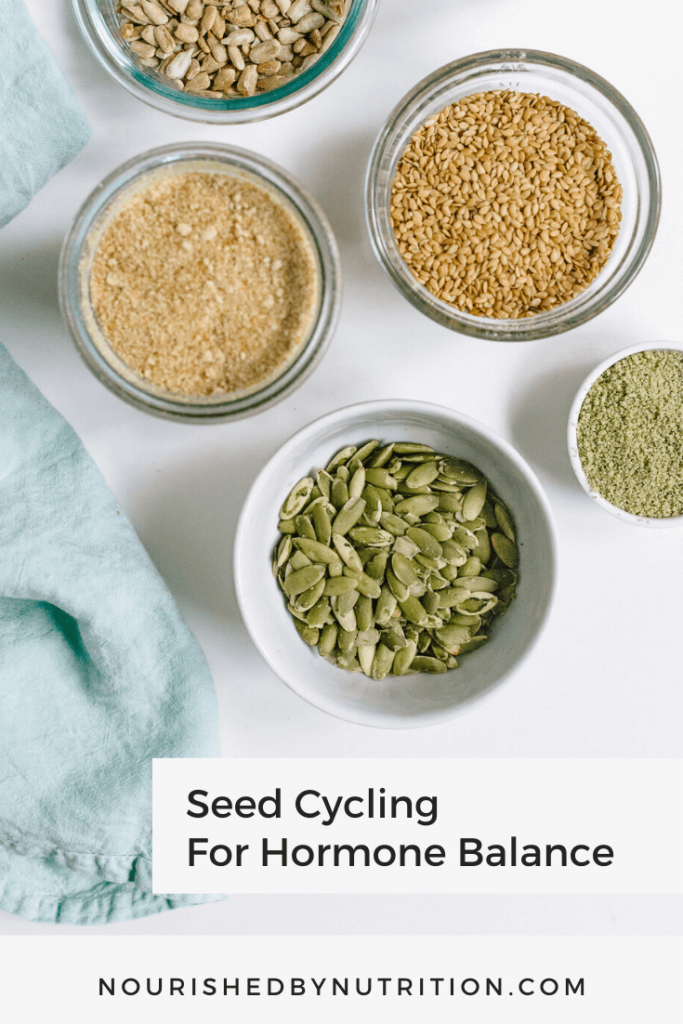

If your period comes regularly at a different time (eg 26 days instead of 28) then switch the seeds accordingly. If you ovulate at a different time in your cycle then switch the seeds accordingly. Ovulation-Luteal Phase (Days 15-28): eat 1-2 tablespoons each of raw, fresh ground sunflower and sesame seeds.

Follicular Phase – Ovulation (Days 1-14): eat 1-2 tablespoons each of raw, fresh ground flaxseeds and pumpkin seeds.
#Seed cycling how to
In this article I’m going to help you understand what seed cycling is, how to do it, what to expect and what it can help with. I recommend seed cycling for hormone balance in both my clinic and book, Beyond the Pill, because it is an effective and gentle way to support women's hormones. For those with hormonal imbalances, seed cycling is not likely to be the best way to improve symptoms.Seed cycling has long been used to support women's hormones by supplying them with the nutrients they need at specific phases of their cycle. In general, women with a normal menstrual cycle already produce the correct amounts of hormones. In regards to sesame, one 5-week study in postmenopausal women found that consuming 1.8 ounces (50 grams) of sesame powder daily increased levels of some other sex hormones but did not affect estrogen levels.įinally, while adequate zinc and vitamin E intake is necessary for good reproductive health, no solid evidence suggests that getting these nutrients from seeds offers any extra benefits for hormone balance. However, the estrogen-promoting and -hindering effects of these lignans are relatively weak and have primarily been associated with anticancer properties rather than normalizing hormone balance.

Seed cycling proposes to balance estrogen and progesterone through the actions of phytoestrogens, zinc, selenium, and vitamin E.ĭOES SEED CYCLING BALANCE HORMONE LEVELS? Meanwhile, the vitamin E in sunflower seeds is thought to help boost progesterone levels. Additionally, zinc from pumpkin seeds is claimed to promote progesterone production in preparation for the next phase of the cycle.ĭuring the luteal phase, lignans - a type of polyphenol - in sesame are supposed to inhibit estrogen levels from increasing too much. Phytoestrogens are compounds in plants that can mimic the action of estrogen.

However, the basic idea is that different seeds can promote or hinder the hormones estrogen and progesterone.ĭuring the follicular phase, proponents of seed cycling claim that the phytoestrogens in flax seeds can help increase or decrease estrogen levels as needed. The claims about how seed cycling works are inconsistent across different sources. Proponents claim that positive hormonal changes will be noticed after just a few months of cycling. For menopausal and postmenopausal women without a regular menstrual cycle, it’s often recommended to use the phases of the moon as a guide to cycle dates, with day one of their cycle falling on the new moon. During the second half of their cycle, which is known as the luteal phase, seed cyclers eat 1 tablespoon each of ground sunflower and sesame seeds per day until the first day of their next period when their cycle starts again. The most common method instructs women to eat 1 tablespoon each of freshly ground flax and pumpkin seeds per day for the first 13–14 days of their menstrual cycle, which is known as the follicular phase. Some sources also assert that it can improve thyroid hormone levels, hair health, weight loss, water retention, and cellulite. Its purported health benefits include helping regulate periods, reducing acne, treating polycystic ovarian syndrome (PCOS), endometriosis, and infertility, and easing symptoms of menopause, such as hot flashes, night sweats, fatigue, and mood swings. Seed cycling is a naturopathic remedy that is claimed to balance hormones by regulating the hormone estrogen in the first half of your menstrual cycle and the hormone progesterone in the second half. It involves eating flax, pumpkin, sesame, and sunflower seeds at different times of the month to balance certain hormones. Seed cycling is a growing trend claimed to balance hormones, boost fertility, stabilize the menstrual cycle, ease symptoms of menopause and especially reduce acne.


 0 kommentar(er)
0 kommentar(er)
